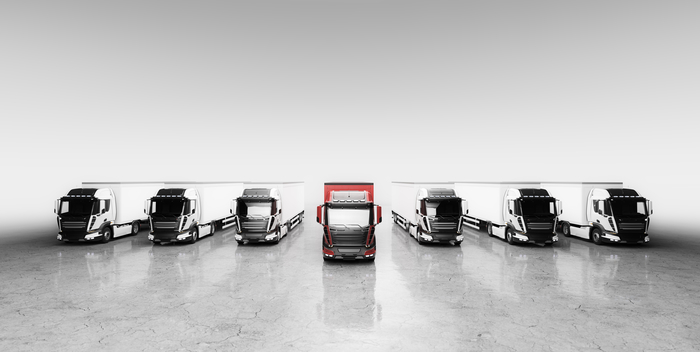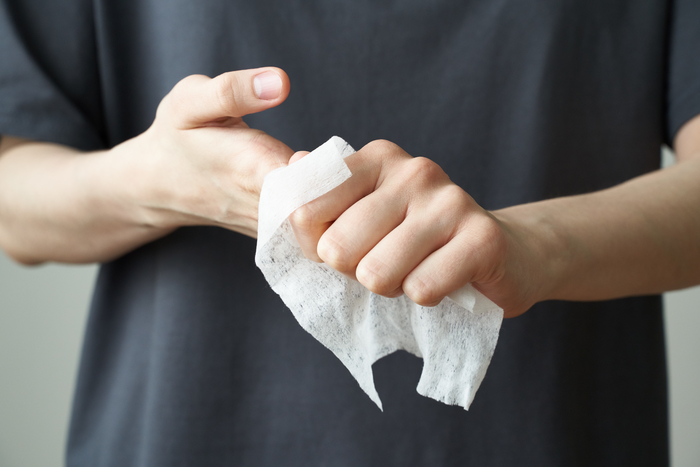
For most drivers, an uncluttered car is a clean car. However, many vehicle fleet and supply chain managers are now asking themselves an important question:
What does it mean to really clean something?
Since the Coronavirus (COVID-19 outbreak) came to the forefront of public conversation, the fleet industry and management teams are wondering how they can enhance fleet sanitation and keep drivers safe. Organizational spokespersons emphasize the distinction between cleaning and disinfecting: The former involves removing visibly soiled debris from surfaces, while the latter requires spraying down surfaces with approved disinfectants.
Obviously, fleet professionals face several challenges when it comes to maintaining clean vehicles, they cannot work remotely. Whether a fleet operation maintains 2 dozen or 2,000 assets, organizing systems for routine car and vehicle cleanings, driver checklists, and incentivized compliance can be time-consuming. Adding even more protocols to the checklist may feel downright annoying, but fleet managers can simplify the process with proper preparation:
In this article, we’ll summarize recent recommendations before providing some quick tips on how fleet managers might improve operational efficiency both now and in preventive maintenance in the future.

Four Sanitation Guidelines Tips for Fleet Management
1. Know CDC-Recommended Cleaning Guidelines
Drivers should wipe down vehicle interior surfaces before going over them a second time with disinfectant. This step should be completed before utilizing interior products like Armor-All. The most effective cleaning products are diluted household bleach, cleaning liquids containing at least 70 percent alcohol, or EPA-registered household disinfectants.
Expert-Approved Disinfectant Options:
- Diluted Bleach Mixture: 5 tablespoons (1/3rd cup) bleach per gallon of water or 4 teaspoons bleach per quart of water.
- Alcohol Solutions: Must contain at least 70 percent alcohol.
- EPA-Registered Disinfectants: Click here for a list.
- Products containing Sodium hypochlorite, Isopropanol, and Ethanol are said to be the most effective.
**Tips for bleach activations: Follow the manufacturer’s instructions for application and proper ventilation. Check to ensure the product is not past its expiration date. Never mix household bleach with ammonia or any other cleanser.
Additionally, stock each vehicle with alcohol-based hand sanitizer, fuel cards, wet wipes, and disposable latex gloves.
2. Assign Drivers and Operators Their Own Vehicles Whenever Possible
Some fleet management companies have already experienced the benefit of assigning drivers their own vehicles. The primary one is an increased sense of responsibility to maintain vehicle cleanliness, maintenance, and attention to detail. With no other driver to blame for oversights, these drivers are more likely to comply with fleet management sanitation guidelines.
However, there is another benefit to single-use vehicles: A decreased likelihood of contamination. Translation: Drivers aren’t sharing vehicle air filled with particles from sneezing and coughing.
Along with the assigned vehicle, fleet drivers should have easy access to your new cleaning regulations. Ask each driver to sign off on having read the new company policies.

3. Enhance Compliance with Digital Checklists
It’s not surprising that maintaining interior cleanliness is a huge challenge for many fleet companies. Drivers sit in these vehicles for more than 8 hours a day, often eating food, drinking beverages, and even smoking cigarettes. In essence, fleet vehicles become all-in-one desk spaces, lunch tables, and bedrooms.
The best way to ensure compliance is via checklists. Fleet managers should create standardized pre and post-trip maintenance schedules for all employees. Tasks should include both cleaning and mechanical checks, like:
- Checking vehicle fluid levels
- Evaluating tool and equipment placement
- Checking windshield wiper and mirror alignment
- Disinfecting windows, dashboards, steering wheels, and control panels
- Sweeping out interior floor mats
- Emptying mini trash bags
If your organization is still relying on handwritten notes for fleet management maintenance and sanitation guidelines, consider switching to a digital maintenance solution.
According to DOT data, “form and manner” errors are one of the most common tasks of noncompliance. By switching to a smartphone app, you’re integrating compliance into an object the person is already accustomed to interacting with every day, making it that much easier for drivers to remember checking in and checking off.
MaintainX helps facilities create sanitation procedures, track work history, and maintain foolproof accountability with digital audit trails. Translation: Fleet managers can now track and monitor procedure compliance in real time. The smartphone app allows managers to instantly assign, assess, and modify work orders wherever they are.

Click here to learn How to Create a Digital Checklist.
The software also includes integrated chat functionality that allows team members to maintain 2-way communication when issues need troubleshooting. Fleet drivers can also upload photos of vehicle problems into the app, so management can quickly provide relevant solutions.

4. Review Best Hygiene Practices with Drivers

Finally, hold meetings with drivers to review expert-recommended practices for personal hygiene. You may also want to place a small sign in every vehicle, with visual illustrations for a reminder.
The CDC endorses the following basic guidelines:
When to Sanitize Hands
- After blowing one’s nose, coughing, or sneezing.
- After using the restroom.
- Before eating or preparing food.
Other Sanitation Tips
- Avoid touching eyes, nose, or mouth with unwashed hands.
- Cover coughs with the inside of elbows.
- Use hand sanitizer with a minimum of 70% alcohol
- Wash hands for 30 seconds with warm, soapy water.
- Maintain social distancing when recommended.

Streamline Fleet Management Sanitation Guidelines
Fleet management companies and public works can increase driver safety by single-assigning vehicles, using the right disinfecting products, reviewing best hygiene practices, and creating digital checklists that make compliance easy.
We hope you have found these cleaning and organizational tips useful. Do you think MaintainX could help your organization streamline processes with digital work orders?
Try it for yourself, and create your first sanitation checklist in minutes!



.webp)

_FEATURE.webp)
.png)